| |
| |
On this page, five new preserved food is introduced from five pieces and
domestic from the world. |
| |
 |
 |
|
■How to make etc.
The thing of the egg in which the egg white is the shape of jelly which has a transparent feeling in blackish brown which comes out in the appetizer of Chinese food is said.
Eggs, such as a duck quail and a hen, were attached to alkaline mud and liquid, and are processed.
■The origin and the origin
He has buried and forgotten the egg of a duck into ashes at the To Mei Era
, and it was discovered by chance from the egg discovered two months afterward having riped.
■Taste
With hydrogen sulfide odor, the rotten smell spreads to a mouth and a nose.
Since it will become weaker if it neglects for a while that it is stinking etc., if it is after slicing and exposing to air, it will become easy to eat. |
■Details
|
|
| |
Place of origin:China
Price:It is five pieces and is about 350 yen.
It is six pieces and is about 500 yen.
Retention period
:Throughput time
is about two to three months.
A prize Taste term is about two years from manufacture. |
|
 |
 |
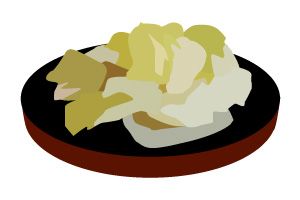 |
|
■How to make etc.
The cabbage to which it comes about attaching if a sausage is ordered is sour.
Vitamin U-C-K etc. are contained as a nutrient.
Although there are also many vinegar attachments of a cabbage and directions currently misunderstood, this is a dish which ferments a cabbage.
■The origin and the origin
Although there were also many directions which think the German origin, it was born in China.
2000 years ago, since Chinese people did not almost have food other than rice, they came to eat the cabbage made sour together with rice.
Moreover, since mothballing was possible, it was found useful also as food for sailors.
■Taste
It is said that the sauerkraut of the home has very strong Acid Taste, and does not match a Japanese mouth.
There is work of normalization of stomach and Intestines
membrane ,prevention of cold, an arrest of hemorrhage, etc. |
■Details
|
|
| |
Place of origin:China
Price:Before or after 400 yen
Retention period
:Weights, such as a weight stone, are carried and it is kept at normal temperature.
If it is a summer, a winter season will also be the best season for eating in about one week for three days.
The preservation for about two weeks is possible in a refrigerator after fermentation.
|
|
 |
 |
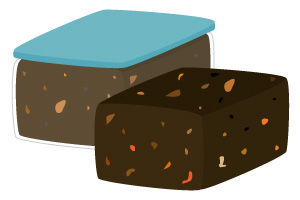 |
|
■How to make etc.
The meat and fruit which were made in pieces are carried out by sterilization with salt etc., and it hardens and saves from a pig or fat of Buffalo.
It is a high calorie, thanks to fat, and can also supply vitamin, thanks to fruit.
■The origin and the origin
It is an Indian's traditional preserved food.
Since the abundant food of nutrition was required when carrying out long-distance movement, it was born.
■Taste
Although it is greasy because of the food for caloric intake, a taste like a beef jerky becomes brave and it is delicious.
In Japan, it is well used by the alpine club of the university. |
■Details
|
|
| |
Place of origin:The Indian of U.S. Canada
Price:It can make in its own house.
Retention period
:It will maintain from 3 for about four years. |
|
 |
 |
 |
|
■How to make etc.
The belly of the seal which removed meat
and internal organs is crowded, and from several months, it is made to bury and ferment in the ground and makes from the figure to which feather has attached a sea bird called Appaliarsuk which is a kind of a sea sparrow for a long period of time of several.
There is an intense smell to the extent that it is referred to as one of the major world 3 smell dishes.
■The origin and the origin
With Inuits' traditional fermented food, it is a precious source of vitamin of the Inuits for whom vitamin tends to be insufficient.
■Taste
Although there is an intense smell, it is said that it is delicious and there is a taste like Gouda cheese which rolled blue cheese and the dried seaweed.
|
■Details
|
|
| |
Place of origin:The area in the Arctic Circle, such as Greenland Canada and Alaska
Price:It can make in its own house.
Retention period
:From two months to several years |
|
 |
 |
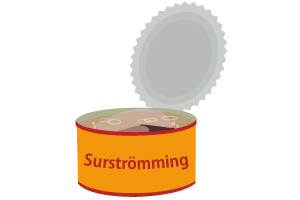 |
|
■How to make etc.
A herring is made preserving in salt and it continues fermenting in a can.
Usually, although breeding or fermentation of a bacillus do not take place in a can, a herring and salt are soaked first, and since it is covered using the herring in fermentation as canned food, and not sterilizing it yet, fermentation continues even after seal.
■The origin and the origin
It will be produced commercially in the 1800s, and grows up and goods came to appear on the market in a market in the 1900s.
■Taste
Although a smell and the taste have a difference for every product, since saltiness is strong, attach with a potato, a scallion, etc., and it eats, or they eat with bread etc. |
■Details
|
|
| |
Place of origin:Sweden
Price:About 5,000 yen
Retention period
:It changes the whole product. |
|
 |
 |
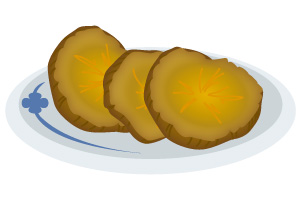 |
|
■How to make etc.
It not only attaches a Chinese radish with rice bran, and salt and a Japanese apricot like a yellow pickled radish, but it carries out to smoke before that using the tree of a Japanese oak or cherry.
■The origin and the origin
Since a fine day did not continue for a long time and was not able to make dried daikon radish, inland was invented.
■Taste
It is a taste that Kurri Kurri Paris Paris, light resistance to the teeth, and flavor are rich and fragrant. |
■Details
|
|
| |
Specialty place:The southern inland area in Akita Prefecture
Price:It is one and is 450 yen.
Retention period
:Two months |
|
 |
 |
 |
|
■How to make etc.
Raw salmon and kouji are soaked and it eats in the flesh.
A salmon and salmon caviar are not red and the maple is not necessarily contained.
■The origin and the origin
Since it was rare for a marine fish not to enter in the Fukushima mountain slope of the Edo period, but to eat a fish in the flesh, he wanted to eat the salmon caught in large numbers at least in the flesh, difficulties were repeated, and what "is soaked with kouji" was invented.
■Taste
A salmon it is said that is considering it as toro~ it suits in the relish and boiled rice of alcohol well.It is a taste of the tradition which is nice from a child even to an old person also without fishiness. |
■Details
|
|
| |
Specialty place:The outskirts of Fukushima Abukuma River
Price:It is 220g and is 1050 yen.
Retention period
:About one month |
|
 |
 |
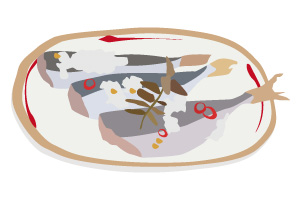 |
|
■How to make etc.
It covers with the leaf of salt and prickly ash, and fresh horse mackerel which took the eyeball is arranged in the barrel called a "soot bucket", and the boiled rice and red pepper which were cooked are scattered to it.
When saving, boiled rice and red pepper are carried.
This is repeated and sealed, a weight is carried and it saves in a cool place.
■The origin and the origin
When small horse mackerel was able to take in large quantities, it was made as preserved food.
■Taste
A fish is a soft taste like bean paste or cheese which is salty although it is sour, and is substantial. |
■Details
|
|
| |
Specialty place:Ishikawa prefectural Noto-cho
Price:480 yen
Retention period
:It is put to sleep for three months in a cool place, and is made to ferment from the 40th in 50 days.
Three-year preservation is possible. |
|
 |
 |
 |
|
■How to make etc.
The ashes of the burned straw are sprinkled on wakame seaweed, and heavens sun curing is carried out, and they are carried out.
The spectacle of drying sudden slight on the seashore the beginning of spring is a spring true symbol with the specialty background.
With ashes, work of the enzyme of wakame seaweed is suppressed, deterioration is prevented, and prolonged preservation is possible.
■The origin and the origin
It was thought beginning that wakame seaweed would be saved at the Edo period with good quality.
■Taste
A scent and flavor remain well and it can just enjoy the original taste of wakame seaweed. |
■Details
|
|
| |
Specialty place:The Asahi town, Toyama
Price:It is 150g and is 1050 yen.
Retention period
:It is put to sleep for three months in a cool place, and is made to ferment from the 40th in 50 days.
Three-year preservation is possible. |
|
 |
 |
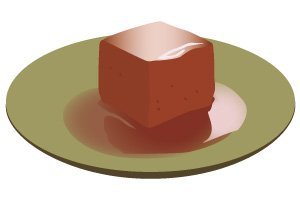 |
|
■How to make etc.
Rice malt is soaked with awamori about two weeks, and is mixed with muddy benikouji which was made liquefied and returned with awamori.
Salt and sugar are put in there.The island tofu which dried there and was washed with awamori is made to put in and seal, and it is made to ripe.
■The origin and the origin
the peculiarity of popular Chinese food "funyu" is strong it is said that it was clever and very salty. A device the person of Ryukyu heightens preservative efficacy using awamori, or reduces the amount of salt in it was repeated, and flavor like a sea urchin was produced.
■Taste
It is a recommendation which is eaten little by little in grain-of-rice size.
Taste like a thick taste like a sea urchin and cheese can be enjoyed.
|
■Details
|
|
| |
Specialty place:Okinawa Prefecture
Price:Four grains enter. 630 yen
Retention period
:What was ripened half a year is the most delicious. |
|
| |
|
|
|

